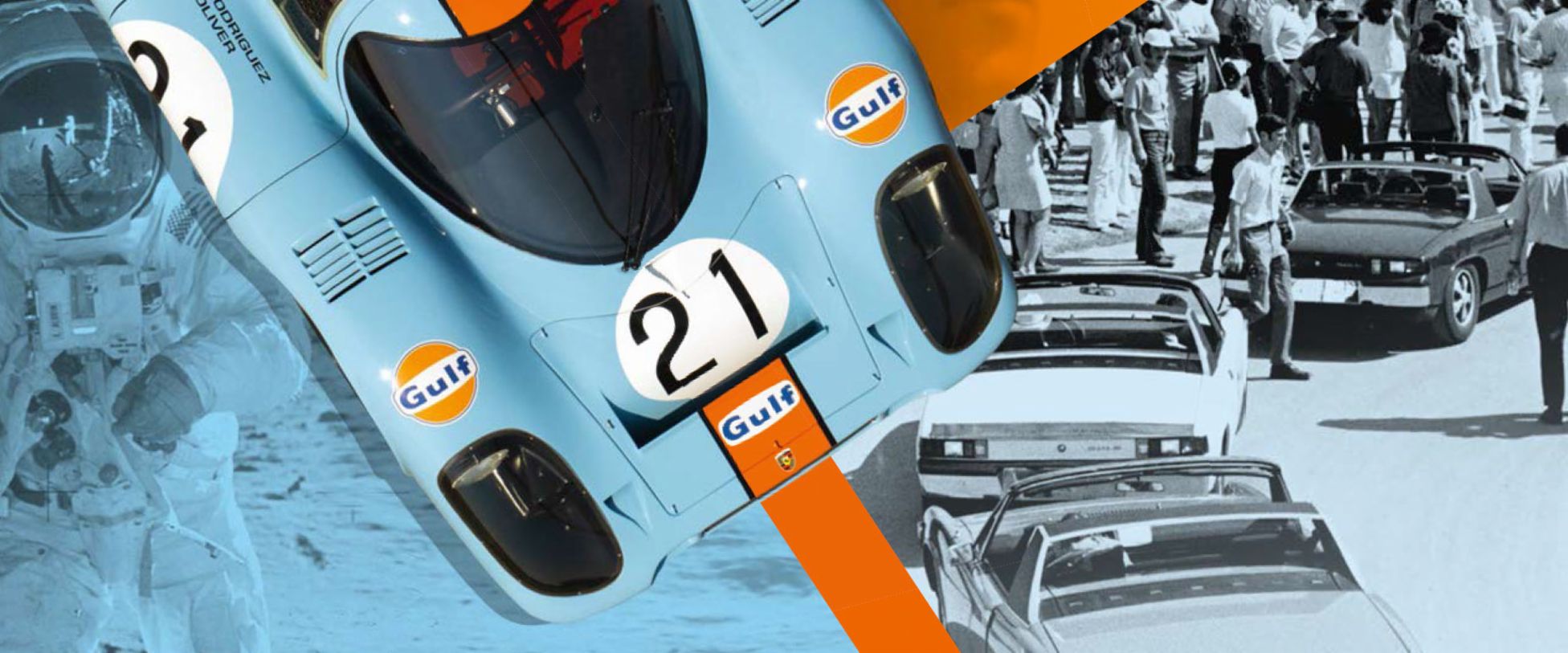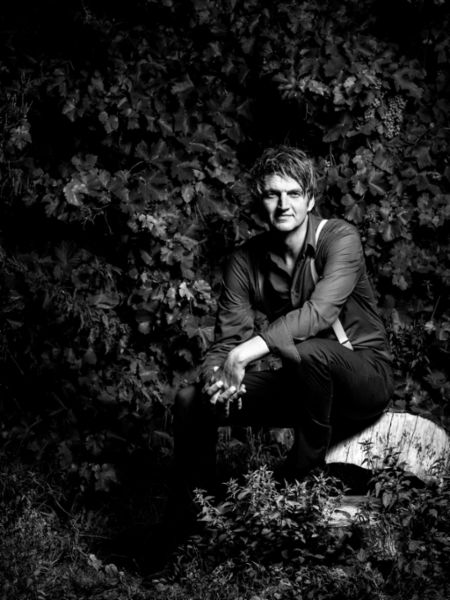1969—Year of Change
About the zeitgeist that produced the diverse sports cars Porsche 917 and Porsche 914.
-
Year of Change
Disruption pervaded every corner of society. It affected statesmen and students, architects and activists, musicians and makers of fashion, hippies and hedonists—all united by a hunger for freedom.
1969 saw the world demonstrate its courage. Everything seemed doable, nothing impossible. If one had the will to do it. Neil Armstrong, the first human on the moon. The 747, the largest passenger aircraft to date, took off. The Concorde, the fastest flying plane to date, crossed the Atlantic in what seemed like a coffee break. The belief in the boundless potential of technology was matched only by the speed with which records fell by the wayside. Whether in politics, society, or technology: Here, a battle of systems, the ideological race for supremacy in space and the world of thought. There, a duel for dominance on the racetrack: pure provocation through physics. The “ultimate animal” is what Ferdinand Piëch called his journey to the edge, in which he aimed to bring Ferrari to its knees at Le Mans: a car the likes of which no one had ever imagined, let alone seen—his “greatest risk,” a “useful bit of lunacy.” At 387 kmh it was undrivable, really, but equally unstoppable. With it, Porsche catapulted itself to the head of the pack of sports-car manufacturers. Coincidence?
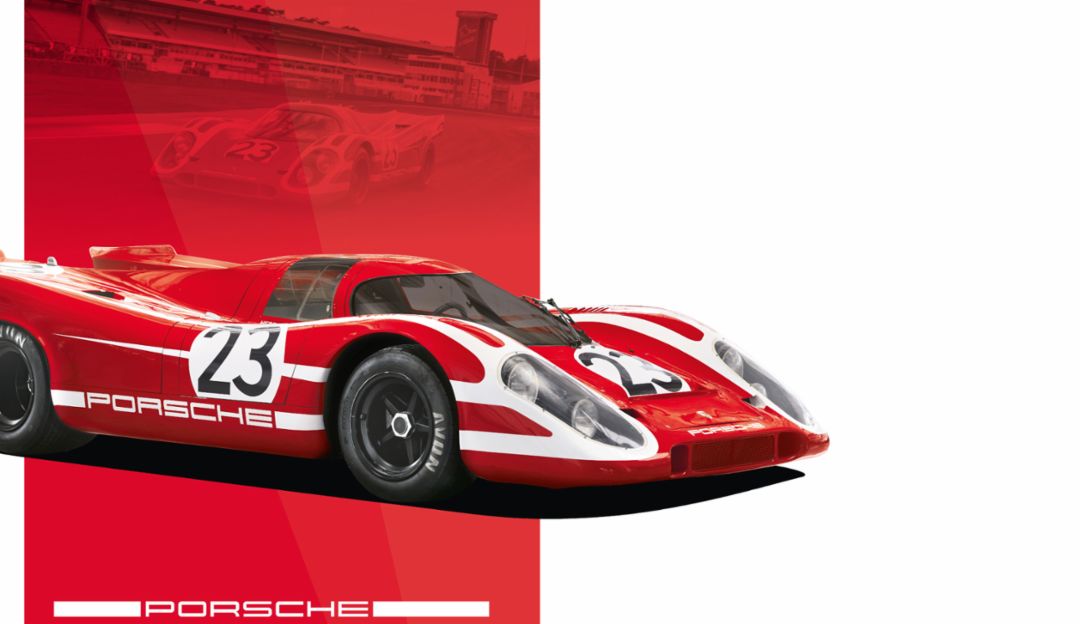
Le Mans winner
March 12, 1969. At the Geneva Motor Show, the Porsche 917 makes its debut. Just over one year later, on June 14, 1970, German driver Hans Herrmann and Englishman Richard Attwood win the 24 Hours of Le Mans in the Porsche 917 short tail with start number 23—pictured here. It’s the first overall victory for Porsche in the endurance classic and a milestone in racing history.To understand the year 1969, a look back at the decade that preceded it is indispensable. That was when the groundwork was laid for the radical, courageous thinking and action that rocked the western world at the end of the 1960s. In the US, the leading writers of the Beat Generation—Allen Ginsberg, William S. Burroughs, and Jack Kerouac, who dies in 1969—launched a radical break with the traditions of linear narrative. In France and Germany, young philosophers like Michel Foucault and the thinkers of the Frankfurt School shifted the perspective on the world, the self, and being. The pop art that emerged in the United States and Britain turned away from the intellectualism of the art world and idealized precisely the opposite: the trivial, the mundane. Completely new things had been bubbling forth everywhere since the 1950s, but it took a while before these niche occurrences found their way into the mainstream. Before more and more people not only dared to think the unthinkable but were actually prepared to experience it and break taboos. In short, to be bold, rebellious, ready to test the boundaries of the tolerable and even exceed them.
Porsche 917-001
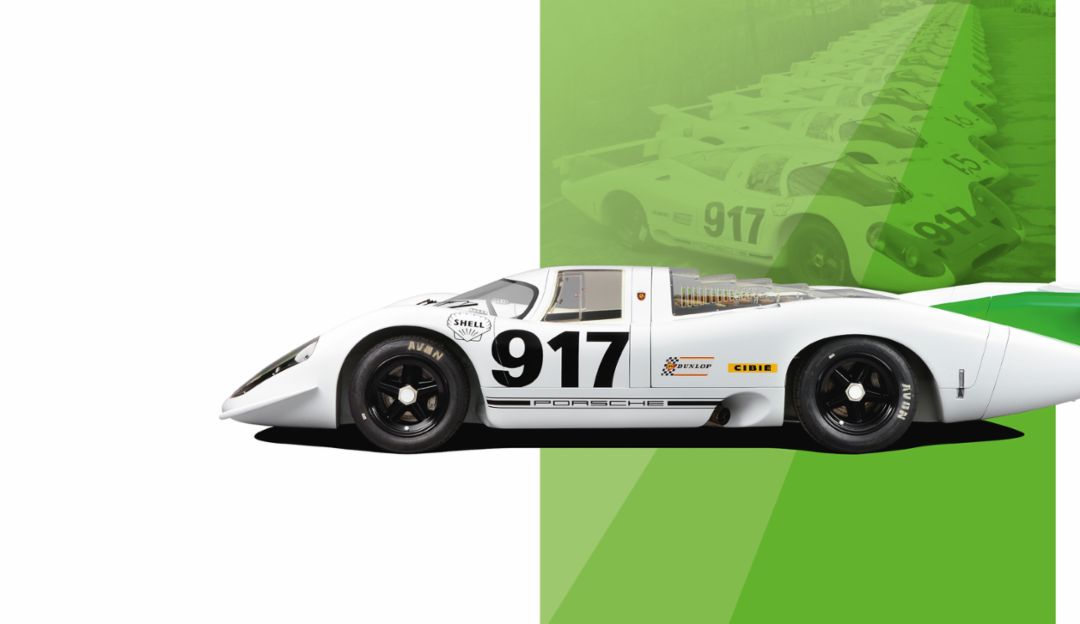
Leading the way
March 10, 1969. The car with chassis number 001 is completed just two days before its world premiere at the Geneva International Motor Show. It’s the first of twenty-five units of the 917 required by the regulations for the homologation of a Group 4 sports car. By September 1970 its appearance will have been modified and repainted three times. In 2019 the Porsche Museum returned it to its original condition.
“The car is a terror.” Rolf Stommelen, race-car driver
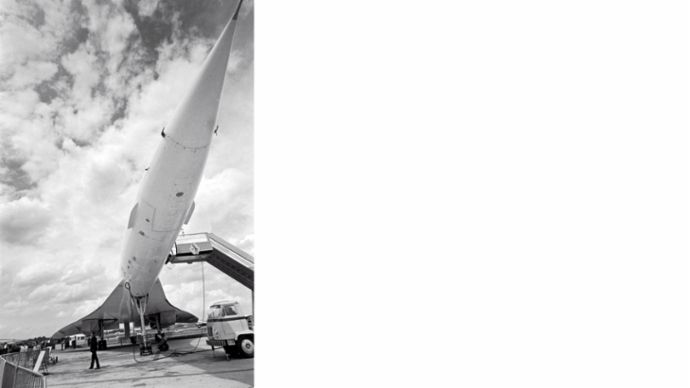
The speed of sound
March 2, 1969. Maiden flight of the Concorde. The Anglo-French joint venture is the first passenger aircraft in the world to break the sound barrier. From London and Paris, New York is suddenly a short excursion.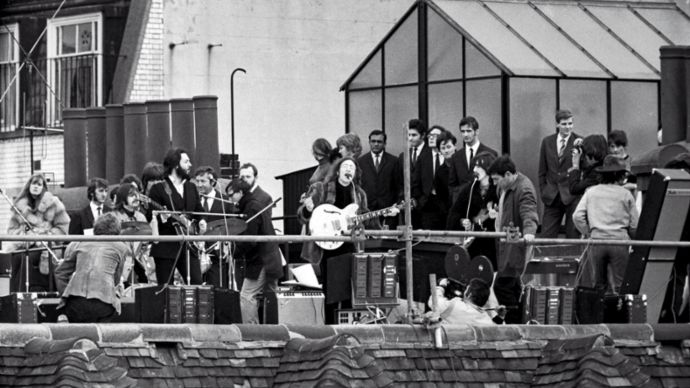
Last live performance
January 30, 1969. The Beatles give their final live performance on London’s Savile Row amid the most renowned bespoke tailors in the world—on the roof of a building that they had bought the previous year for their newly formed company, Apple Corps.“So we decided, ‘let's get up on the roof.’” Ringo Starr, The Beatles
Tom Wolfe wrote that the naivete to assume the impossible could occur was what made the 1960s possible in the first place. And not only in the fields of science and technology. Disruption pervaded every corner of society. It affected statesmen and students, architects and activists, musicians and makers of fashion, hippies and hedonists. What they all shared was the insatiable hunger for freedom, the desire to shake off old conventions and break out of the torpor of the postwar years. The world of tomorrow was a place that must be made today. The old authorities lost their sway, the private became political, and the political became personal.
No. 23 has many names

The Pink Pig
The 917/20. One of a kind. And not only for its extravagant, pink paint job and decals. The idea comes from Porsche designer Anatole Lapine, that also gives the car its nicknames Pink Pig, Truffle Hunter, and Big Berta.
Race to the moon
July 21, 1969, 02:56 GMT. The “Apollo 11” spacecraft lands on the moon. Neil Armstrong becomes the first human to set foot on the Earth’s satellite and later photographs fellow astronaut Edwin “Buzz” Aldrin walking on the eastern side of the moon.
“The surface is fine and powdery.” Neil Armstrong, astronaut
The rejection of the old was most pronounced in the hippie culture, which by 1969 had long since become a mass movement. In August, an estimated five hundred thousand people made a pilgrimage to a remote farm in the state of New York, where the Woodstock Music and Art Fair provided a stage on which to live out their vision of an existence free of constraints and inhibitions, to experiment with drugs, and to listen as Jimi Hendrix transformed the American national anthem into a plaintive wail with screaming feedback. While a powerful rainstorm pummeled the ground into a sea of mud, the singer of the band Canned Heat predicted through song that “a change is gonna come.”
1970
Le Mans with Steve McQueen
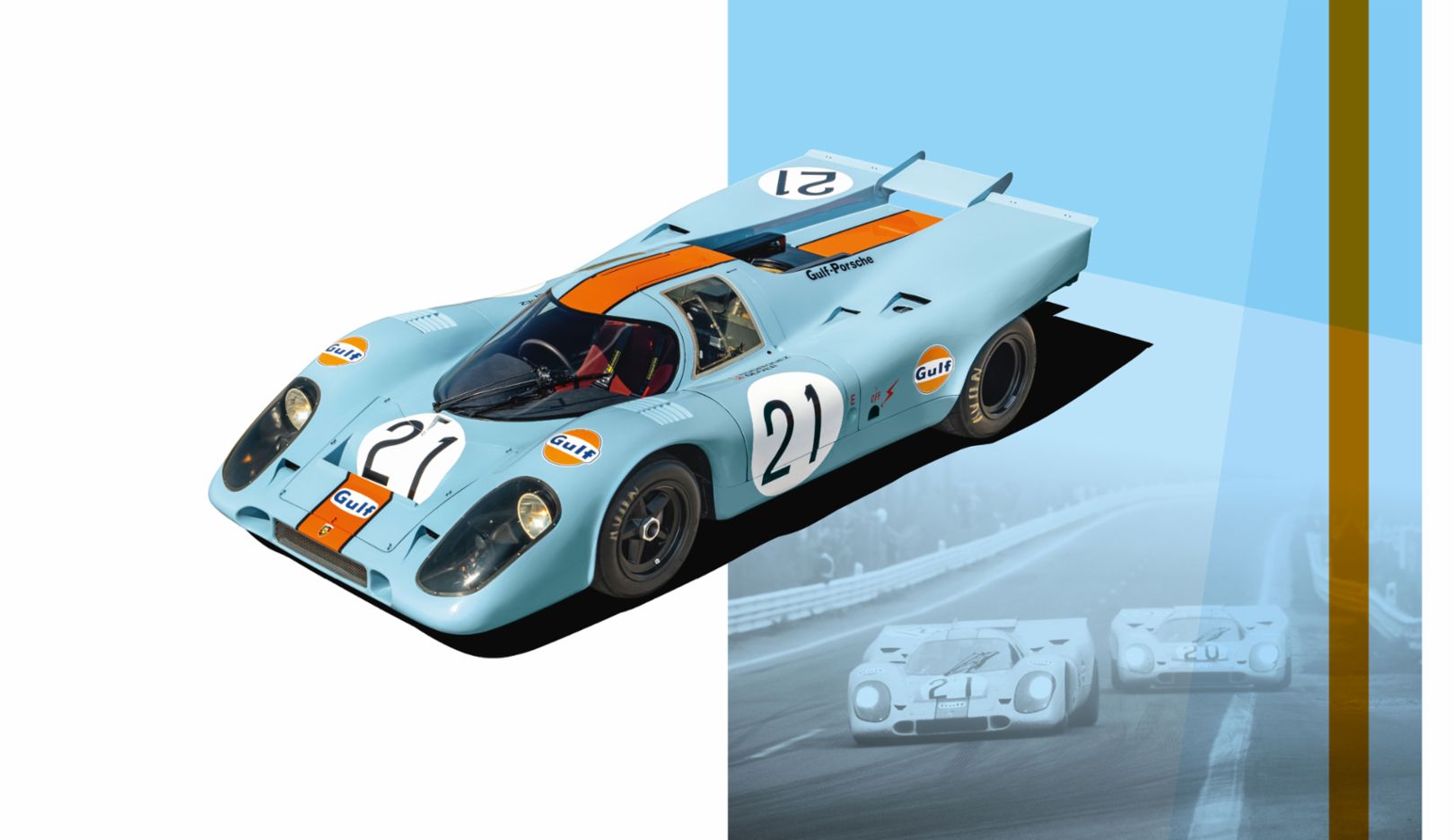
Porsche 917 “Gulf”
The 917’s cult paint job in light blue and orange, seen in the film Le Mans, has a commercial backstory. With the financial outlays for a motorsport presence shooting through the roof, Porsche opts for a partnership with the English racing team John Wyer Automotive Engineering Ltd.—and adopts the colors of its sponsor, the Gulf Oil company.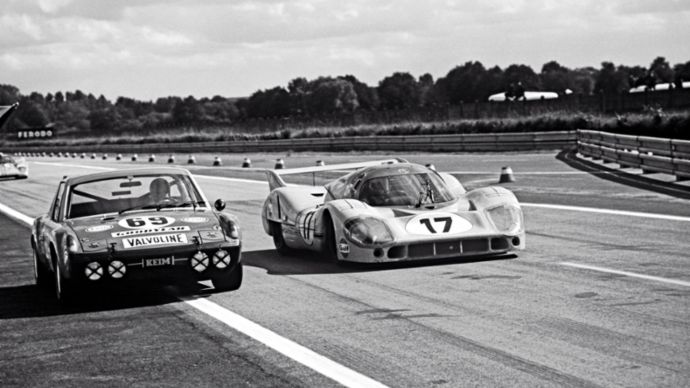
Encounter on the racetrack
June 13, 1971. The long-tail version of the 917, driven by Jo Siffert and Derek Bell, meets the 914/6 of Gerd Quist and Dietrich Krumm at Le Mans.
The first “Interview”
November 1969. Artist Andy Warhol and the English journalist and Village Voice cofounder John Wilcock publish “Interview”. The magazine consists exclusively of interviews—most of them conducted by Warhol personally.“Good business is the best art.” Andy Warhol, artist
But change was already well under way by then: the musical Hair became a global hit and spread the message of “make love, not war” all the way to communist Belgrade. In Ann Arbor, Michigan, four bored guys calling themselves The Stooges formed a sort of proto-punk act as a nihilistic reply to the escapism of the flower-power kids, raising the bar in terms of volume with the new generation of guitar amplifiers and providing a brute-force soundtrack for the revolutionary mood of the country, while at the other end of the musical spectrum were the unbridled improvisations of free jazz—total erasure of the old borders of musical expression and a departure from traditional harmony.
The dream factory had to reinvent itself as well. In Hollywood, a new generation of writer-filmmakers rebelled against the aesthetic formulas and outmoded mores of the studio system, bringing sex, drugs, and rock ’n’ roll to the big screen. The directors were aided by the fact that film cameras had become less cumbersome and enabled greater mobility. Shooting outdoors at real locations engendered greater intimacy and authenticity than filming on studio sets. Arthur Penn’s gangster film Bonnie and Clyde channeled the zeitgeist of the moment. The film turns criminals into supposedly relatable characters who scorn the rules of the establishment. Neo-westerns like Sam Peckinpah’s The Wild Bunch or Sergio Leone’s Once Upon a Time in the West recounted the story of the conquest of the west with unflinching brutality and in doing so reflected the fractures of the present. Dennis Hopper’s Easy Rider, the story of two dropouts who set off on their motorcycles in search of freedom, became the cult film of the Woodstock generation. The Oscar for Best Picture went to John Schlesinger’s Midnight Cowboy, which dramatizes a love story between two men.
Indeed, the taboo-breaking verve of the new Hollywood proceeded with unprecedented abandon. On cinema screens, theater stages, and advertising posters, there was suddenly lots of bare skin on display. Sexual liberation set a dynamic in motion that extended to the center of society. While the Stonewall riots on New York’s Christopher Street in June marked the birth of the organized gay rights movement, hippies were said to mistrust anyone who went to bed with the same person twice.
Just 12 units
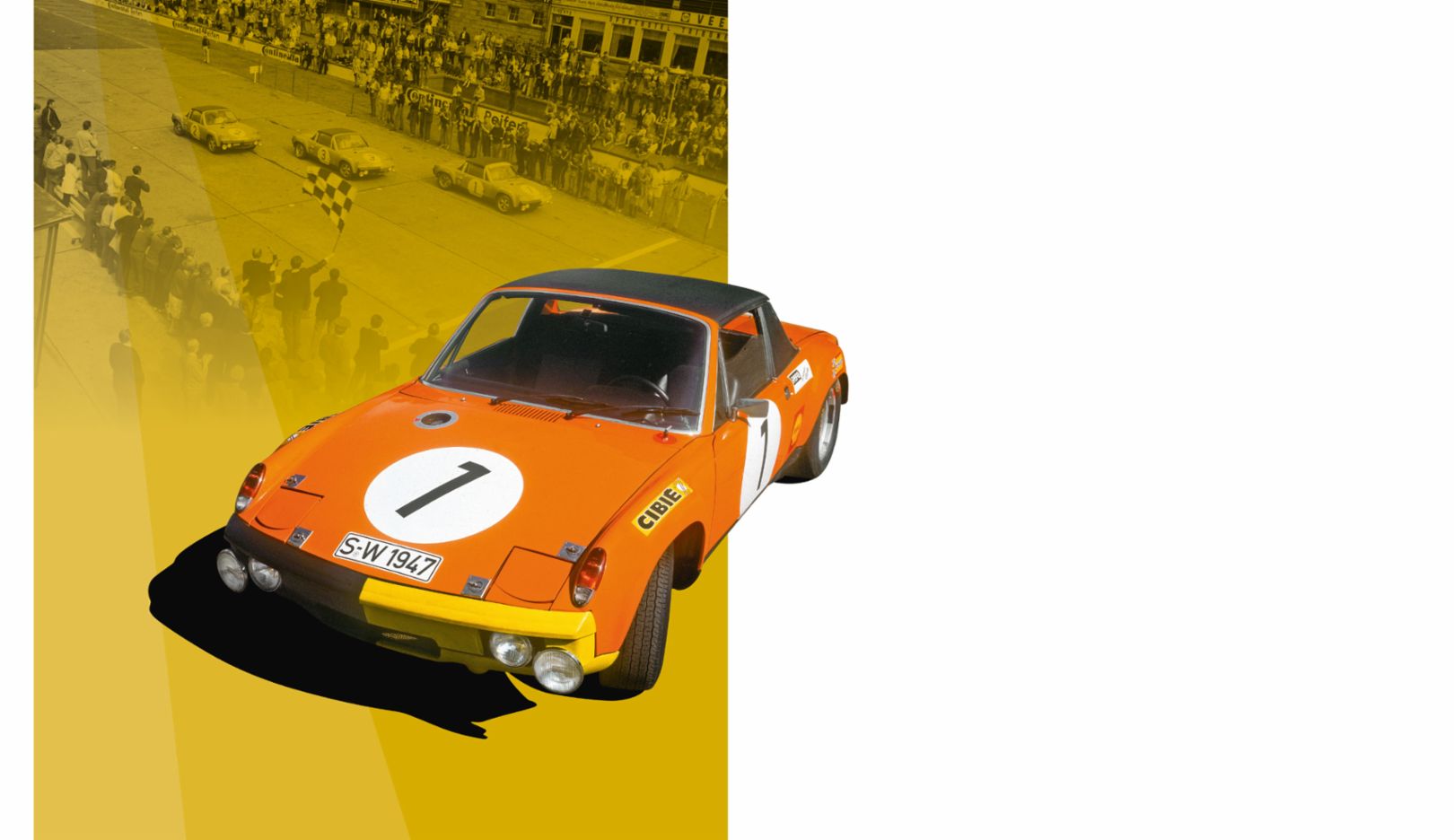
Porsche 914/6 GT
August 22, 1970. The Porsche 914/6 GT, of which just twelve units are built, celebrates its greatest racing success. After eighty-six hours of racing in the Marathon de la Route on the Nürburgring, the six-cylinder sports cars from Porsche hold the top three spots. The winner’s trophy goes to Gérard Larrousse (France), Claude Haldi (Switzerland), and Helmut Marko (Austria).
Peace and love
August 15–18, 1969. The Woodstock Festival features performances by stars like Jimi Hendrix, Janis Joplin, Jefferson Airplane, Santana, Joe Cocker, and Sly & The Family Stone. Today they’re considered icons of the hippie movement.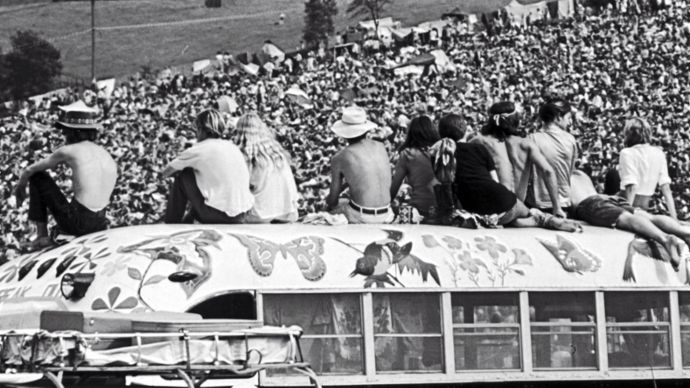
“A Change Is Gonna Come” Sung by the band Canned Heat at Woodstock
In the course of this liberalization, the traditional roles of men and women were brushed aside. French fashion designer Yves Saint Laurent put his models in pantsuits and created transparent tops intended to be worn without undergarments. The look initially caused a scandal, but was soon considered socially acceptable—not unlike the way Mary Quant had normalized the miniskirt a few years before. Vibrant worlds of color, coupled with materials like plastic and rubber, find expression in the furniture designs of Dane Verner Panton, who thereby distanced himself substantially from the sober tradition of Scandinavian wood furniture design, tossing the kidney-shaped table and shelf unit on the trash heap of interior-design culture.
The VW Porsche
115,631 units with 4 cylinders

Porsche 914/4
The base version of the 914 features an air-cooled, 1.7-liter, four-cylinder boxer engine with 59 kW (80 hp). The first series sports car with a mid-engine was designed by Porsche and distributed in collaboration with Volkswagen. It’s available in two versions: as a 914 with four-cylinder engine by Volkswagen and as a 914/6 with a six-cylinder power unit by Porsche.
Confident women
The advertising images for the 914 in 1969 present an image of women that’s in step with the times: women are self-assured, independent, liberated—and have a thing for mid-engine sports cars.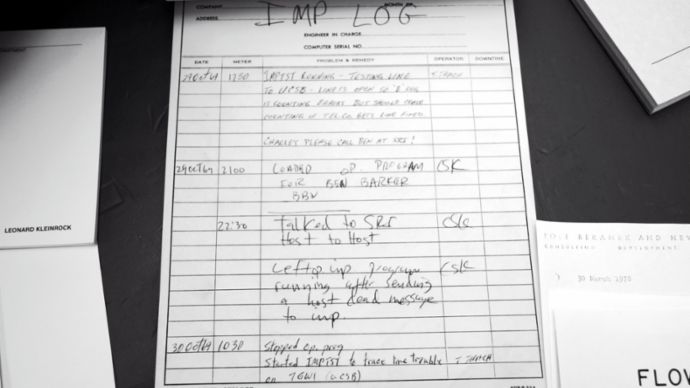
Precursor to the Internet
October 29, 1969. At the University of California, Los Angeles, programmer Charley Kline becomes the first person to transmit a message from one computer to another. It is notably concise: “Log”—the starting gun for ARPANET, a precursor to the Internet.“And then it had a bug and crashed.” Charley Kline, programmer
The Porsche 914, too, could not have been created at any other time than the late 1960s. Not only because of its trendy and vivid paint jobs, but also because it stood, like no other car of its time, for emancipation behind the wheel and a new kind of social mobility: a sports car for everyman—and every woman.
8 cylinders for the 914
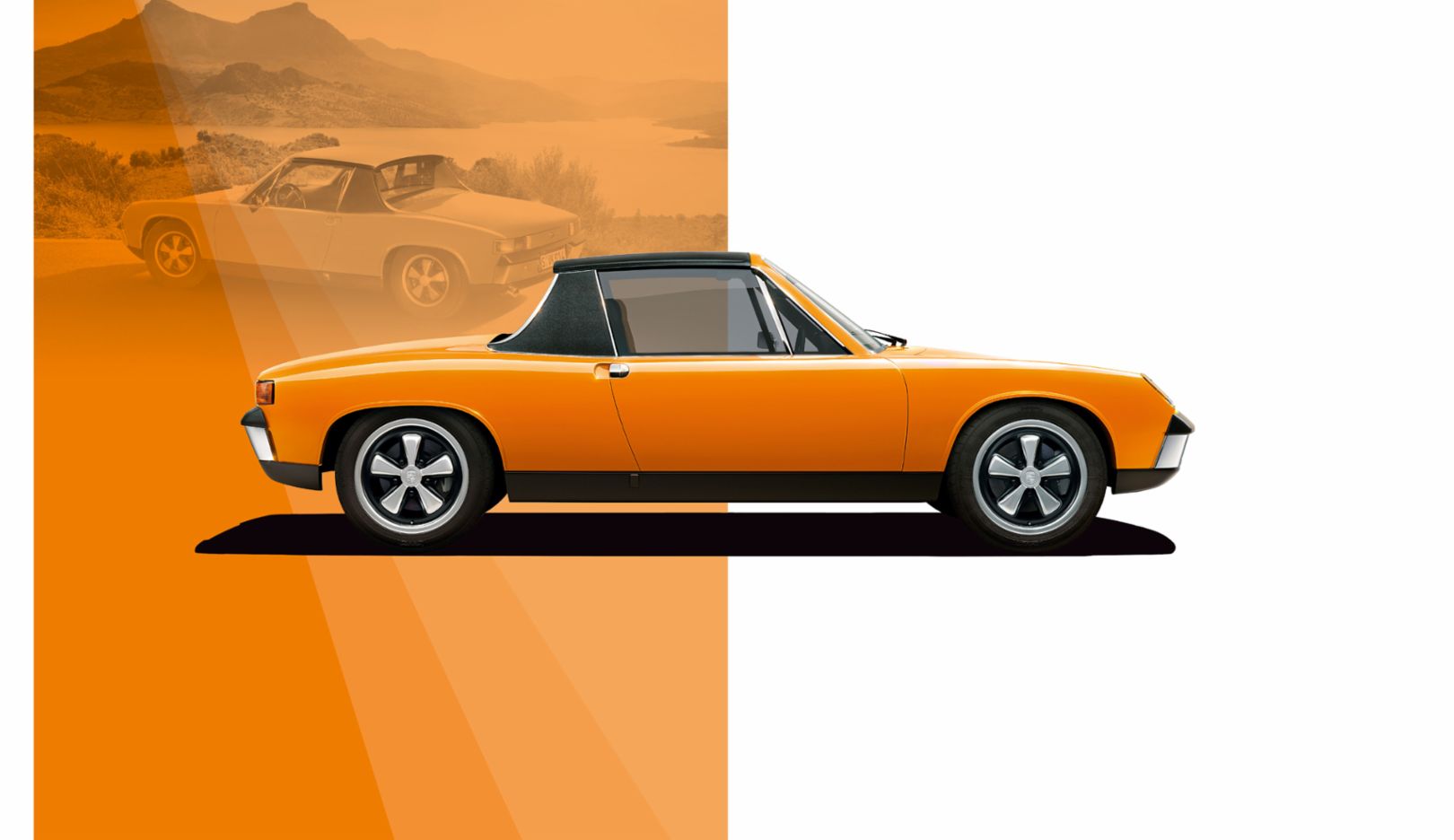
Porsche 914 S, Ferdinand Piëch’s custom special
The sports-car manufacturer builds a test vehicle with the Porsche 908’s engine for its head of development, Ferdinand Piëch. The 914 S combines mid-engine dynamics with the eight-cylinder engine used in racing. The result is a test vehicle with chassis number 111 and 221 kW (300 hp), whose exterior barely differs from the less powerful 914 variants.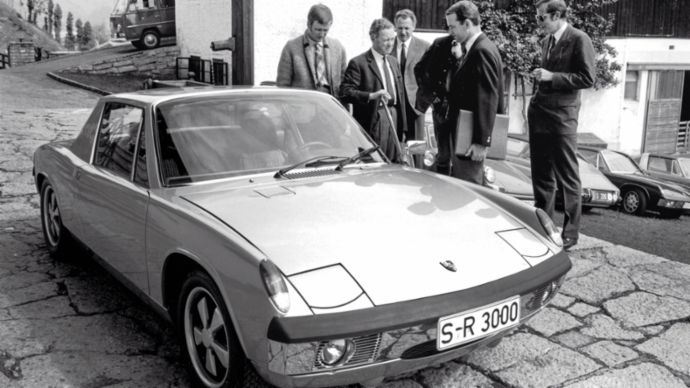
Eight cylinders for Ferry Porsche
September 19, 1969. For his sixtieth birthday, Ferry Porsche (second from left) receives a very special birthday present in Zell am See: a street-legal 914 S with 260 hp.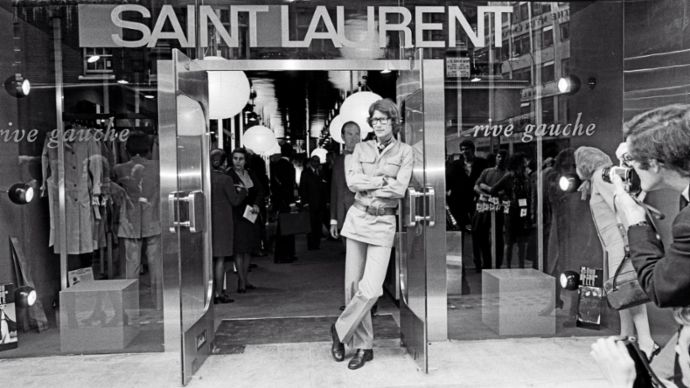
YSL for the gents as well
September 10, 1969. Liberation in the other direction: in his newly opened Rive Gauche boutique in London, French fashion designer Yves Saint Laurent presents clothing not only for women, but also—for the first time—for men.“I wanted women to have the same basic wardrobe as a man—blazer, trousers, and suit.” Yves Saint Laurent, fashion designer
Yet every time of change has its darker facets too. One manifestation of that was that the loudly proclaimed desire for change also met with a robust reaction from state institutions. In the western world, almost all the protests against the war in Vietnam were suppressed. Then there was the rise of terror. Sometimes the drive for liberation tips into the paranoid and sect-like. The grisly ritual murders by the Manson family shocked the entire western world. For the hippie movement, it was the end of innocence.

Porsche 916
The critical impetus for the 916 is provided by the 914 S—which was inspired by Ferdinand Piëch—because it shows that a 914 can handle considerably more horsepower. In 1971 eleven units of the 916 are built, equipped with 154 kW (210 hp), six cylinders, and a boxer engine. The car doesn’t go into series production because it would have been too expensive to manufacture.Despite, or perhaps precisely because of these contradictions, the final years of the 1960s continue to resonate to this day. Looking back, the dynamism and drama of this unfettered age may seem to be the result of a combination of belief in progress, audacity, and naïveté. But above it all is the seemingly limitless, boundary-testing, and all-encompassing desire for change that came to characterize 1969. For many Porsche enthusiasts, this zeitgeist is embodied by the 917. Courage changes everything.
Special Exhibition at the Porsche Museum
The Porsche Museum is showing the special exhibition 50 Years of Porsche 914: Typical Porsche through July 7, 2019. Also running through September 15, 2019, is the exhibition 50 Years of Porsche 917: Colors of Speed, a special feature on what may be the most famous race car of all time. The first 917 ever built is also on display in Zuffenhausen, restored to its original condition.
www.porsche.com/museum/en

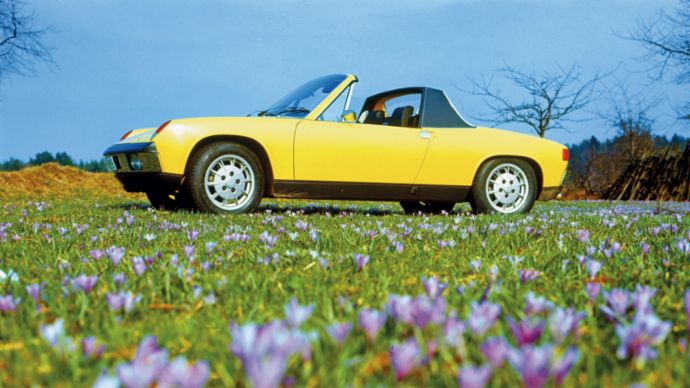
Photos
NASA, Icon and Image, Central Press, Space Frontiers, David Redfern, Bettmann, Mirrorpix, Archive Photos, Keystone-France (all from Getty Images)
